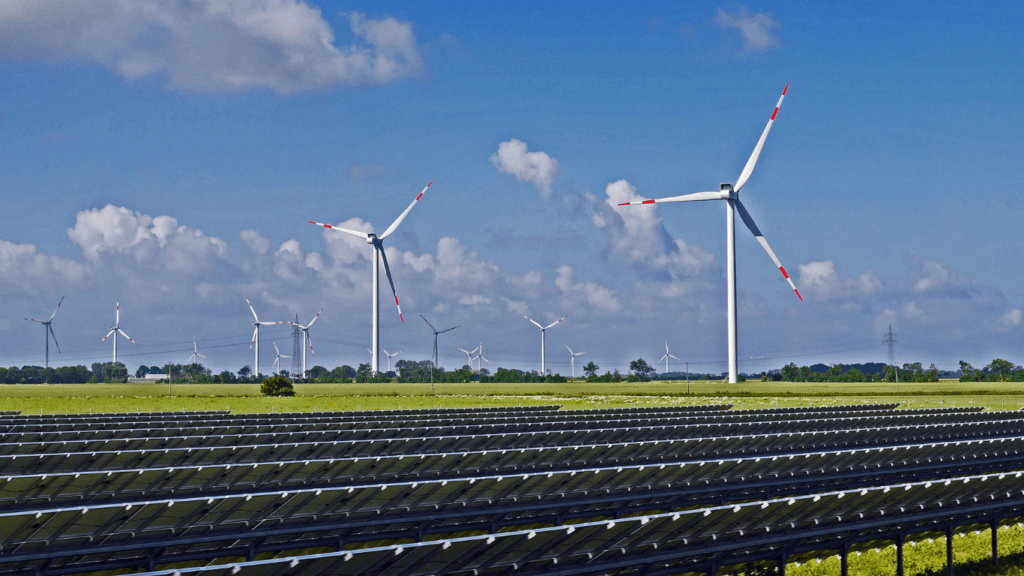The Importance of Reducing Agriculture’s Carbon Footprint
Reducing agriculture’s carbon footprint holds critical importance for environmental sustainability. Agriculture accounts for around 10% of global greenhouse gas emissions, according to the Environmental Protection Agency (EPA). Methane from livestock, nitrous oxide from fertilized soils, and carbon dioxide from various farm operations contribute significantly to climate change.
I see the urgency in addressing agriculture’s emissions to limit global warming to 1.5°C, an essential target set by the Paris Agreement. Efficient practices and innovative solutions can help achieve this goal, ensuring food security without compromising the planet’s health.
Enhancing soil health plays a vital role in carbon sequestration. Practices like cover cropping and reduced tillage increase soil’s organic matter, trapping carbon dioxide. This not only mitigates greenhouse gases but also improves crop yields and resilience to climate impacts.
Resorting to renewable energy sources on farms can further cut emissions. Solar panels, wind turbines, and biogas systems offer sustainable alternatives to fossil fuels, reducing reliance on non-renewable energy and lowering carbon footprints.
Precision farming technologies, such as GPS-guided equipment and drone surveillance, exemplify how we can optimize resource use. Targeted fertilization and irrigation minimize waste and emissions, demonstrating that smarter farming leads to both economic and environmental benefits.
The push for reduced carbon footprints in agriculture isn’t just a matter of environmental responsibility. Investments in sustainable practices and technologies can enhance productivity and profitability. Forward-thinking approaches will set the stage for a resilient and sustainable agricultural sector.
Technological Advancements
Technological advancements significantly contribute to reducing agriculture’s carbon footprint. Innovations in this sector help boost efficiency, cut emissions, and promote sustainable practices.
Precision Agriculture
Precision agriculture uses technology to monitor and manage field variability. GPS-guided tractors, drones, and sensors collect data on soil conditions, crop health, and weather patterns.
This data allows farmers to apply water, fertilizers, and pesticides more accurately, reducing waste and emissions. For example, variable rate technology (VRT) adjusts the amount of input materials based on the specific needs of different field zones. This results in fewer chemicals released into the environment and optimized resource use.
Carbon Capture and Storage
Carbon capture and storage (CCS) involves capturing carbon dioxide emissions from agricultural activities and storing them underground. This technology helps prevent CO2 from entering the atmosphere, mitigating climate change.
Agricultural methods like biochar application, where organic material is converted into charcoal and added to soil, enhance carbon sequestration and soil health. Another technique is afforestation, planting trees on agricultural lands to absorb CO2. These approaches offer dual benefits: reducing the carbon footprint and improving land quality.
Sustainable Farming Practices
Adopting sustainable farming practices significantly reduces agriculture’s carbon footprint. Effective methods include no-till farming and agroforestry.
No-Till Farming
No-till farming conserves soil and reduces carbon emissions. By leaving the soil undisturbed, organic matter accumulates, which improves soil structure and water retention. USDA studies show that no-till practices can reduce soil erosion by over 90%. Farmers also save fuel and reduce machinery wear, lowering production costs.
Agroforestry
Agroforestry integrates trees and shrubs into agricultural landscapes to enhance biodiversity and sequester carbon. By planting trees alongside crops or pastures, farmers create windbreaks that protect soil and crops, reduce erosion, and improve microclimates.
The World Agroforestry Centre reports that agroforestry systems can sequester up to 34 tons of carbon per hectare per year. Multistructured landscapes also support diverse species, promoting ecosystem health and resilience.
These sustainable practices hold the potential for significant environmental benefits and contribute to long-term agricultural productivity.
Renewable Energy Solutions

Renewable energy solutions significantly contribute to reducing agriculture’s carbon footprint. I focus here on the transformative impact of solar power and bioenergy in this sector.
Solar Power
Solar power is a versatile and sustainable energy source that can revolutionize agricultural practices. Solar panels on farm buildings generate electricity, reducing reliance on fossil fuels and lowering emissions.
Additionally, solar water pumps provide a sustainable means for irrigation. By converting sunlight into electricity, these systems enhance efficiency and reduce operational costs. For example, farmers in California use solar panels to power drip irrigation systems, optimizing water use and conserving energy simultaneously.
Bioenergy
Bioenergy harnesses organic materials to produce energy, offering a dual benefit of waste management and energy generation. Bioenergy sources include crop residues, animal manure, and dedicated energy crops.
Anaerobic digesters convert these materials into biogas, which can be used for heating, electricity, or as a vehicle fuel. Farmers in Germany, for instance, use biogas plants to convert manure into energy, reducing waste and supplying renewable power to the grid. Bioenergy solutions not only reduce emissions but also enhance soil health by recycling nutrients back into the land.
Improving Soil Health
Healthy soil forms the foundation of sustainable agriculture. By incorporating innovative practices, we can enhance soil health and reduce agriculture’s carbon footprint.
Cover Cropping
Cover cropping involves planting specific crops like legumes or grasses between harvests to protect and enrich the soil. This practice helps prevent soil erosion, improve soil structure, and increase organic matter content. Cover crops also fix nitrogen, which reduces the need for synthetic fertilizers. For instance, planting clover can significantly boost soil nitrogen levels, decreasing reliance on chemical inputs.
Composting
Composting transforms organic waste into valuable, nutrient-rich soil amendments. This process helps retain soil moisture, suppress plant diseases, and reduce the need for chemical fertilizers.
By composting crop residues and livestock manure, farmers can recycle nutrients back into the soil, enhancing fertility and minimizing greenhouse gas emissions. For example, incorporating compost made from vegetable scraps and manure can improve soil texture and increase its carbon sequestration capacity.
Policy and Community Initiatives
Government policies and community initiatives play a critical role in reducing agriculture’s carbon footprint. Effective policies, along with community-driven programs, support sustainable agricultural practices.
Government Incentives
Governments can drive sustainability by providing financial incentives. Tax credits and grants encourage farmers to adopt renewable energy solutions like:
- solar panels
- wind turbines
For instance, in 2020, the U.S. Department of Agriculture (USDA) offered grants covering up to 25% of the cost for renewable energy systems on farms.
Low-interest loans for energy-efficient equipment help farmers reduce operational emissions. Subsidies can also promote the use of cover crops or organic farming methods, which improve soil health and sequester carbon. Legislation supporting carbon markets rewards farmers who reduce greenhouse gas emissions.
Farmer Education and Support Programs
Educational programs equip farmers with knowledge on sustainable practices.
- Extension services and workshops offer hands-on training in techniques like precision agriculture and composting.
- According to the USDA, their Sustainable Agriculture Research and Education (SARE) program provided over $310 million in grants for sustainable practices education by 2022.
- Online resources and mobile apps offer real-time data on weather, soil conditions, and crop health.
- Collaborative community initiatives like farmer cooperatives share resources and best practices, facilitating collective action.
- Peer-to-peer mentoring encourages the adoption of innovative solutions, as experienced farmers guide novices in implementing sustainable techniques.



